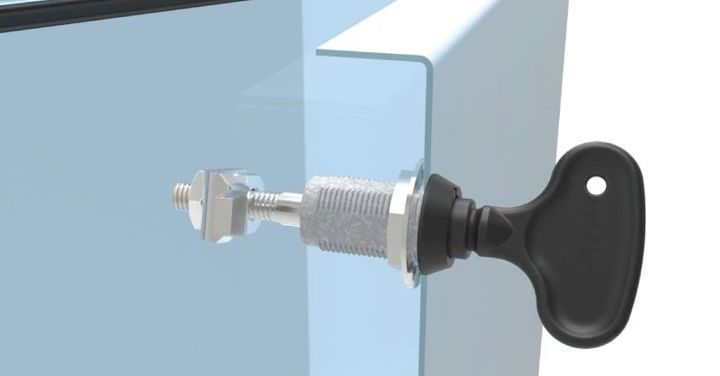HTF is an industry leader in hardware and component distribution founded in 1988. Over the years HTF has established a proven track record in maintaining a stock of diverse inventory including standard and non-standard parts. During this very successful time of building the business for over 30 years, HTF has also developed critical partnerships with many strong manufacturers in the industry. Beginning in 1992 HTF secured an authorized distribution partnership with Southco. Because of this ongoing partnership, we are pleased to highlight the latches that Southco has in their inventory.
Managing enclosure access is a design consideration that must be considered during the development process. Giving or denying access to an enclosure can be accomplished in several ways. Usually, two surfaces, like a panel and frame, are joined together with a latching or locking mechanism to separate the user from what is secured inside.
What Is a Latch?
Most people encounter latches regularly as a part of their daily lives. This can look like a magnetic handle that opens a kitchen cabinet door or a latch that releases a car door. To put it simply, a latch is a fastening device that joins two surfaces together, while still allowing or restricting access to the interior of a space or location.
Types of Latches
There are many different types of latches depending on the application. The below latch types should be carefully considered when choosing the requirements of a design.
Cam Latch
The cam latch is a simple and cost-effective latch consisting of a body that attaches to a moving panel or door. It incorporates a cam lever that can be rotated to engage the non-moving or fixed pane. Once the door or panel closes, the cam latch rotates behind the fixed panel to secure it. Cam levers are typically used to shut and secure cabinet doors, as well as several other enclosures. Cam latches are often available in different materials, including stainless steel and zinc.
Compression Latch
The compression latch is very similar to the cam latch with the difference being the compression latch creates a clamping force between two surfaces. This is to prevent vibration and rattling between the two panels. Cutting down on the vibration helps to protect from potential damage due to the external environment.
Push-to-Close/Slam Latch
This spring-loaded latch is a very simple design that secures panels by pushing the door closed. It is also known as slam latch because it prevents a door or panel from being slammed shut. The ideal use of the slam latch is when latch reliability is most important. An example of this is industrial equipment, construction, and transportation applications.
Draw Latch
Draw latches use tension to pull two surfaces securely together in the same plane. This type of latch is typically made up of two pieces, the first fixed to one panel and acts as an operating mechanism. The second panel will have the securing mechanism mounted, which acts as a keeper. Tension is created when the lever is hooked to the keeper. This simple latch is most often used on HVAC equipment.
Sliding Latch
When an engineer chooses the appropriate latch type, they need to consider all of the information that could impact latch performance. In this case the sliding latch is made up of a sliding or rotating body attached to one surface, while the stationary keeper will be attached to the other surface. It is secure when the sliding or rotating piece moves behind the stable piece.
Indoor Latches
Generally, indoor applications do not have as strict requirements as outdoor applications. Engineers will not have to worry about outside environmental factors, such as UV rays and rain.
Outdoor Latches
Outdoor latches have much stricter requirements compared to indoor latches. Engineers will have to account for all environmental factors and weather. There could also be compliance regulations and standards for water and dust intrusion that may be required, depending on the industry. When installing a latch outdoors, security risks increase depending on where the enclosure is located and its interior contents.
Mechanical and Magnetic Latching
These latches provide mechanical or magnetic latching to secure the door, cabinet or panel. Some latches have electronic capabilities where the user does not need to apply any direct actuation to secure the latch.
Visible or Hidden Latches
Visible latches are used when the user needs to see the latch in order to actuate it. Latches may need to be concealed for security reasons, in which case they can be installed behind a door or panel, out of sight.
Custom Latches
All latches are designed to keep a surface panel or door closed. The major differences between different latch types are the method of actuation and the mounting method. Knowing the different latch types available can help any engineer design the right latch for their product.
For over 70 years, Southco has been a trusted supplier of innovative access solutions including latches. HTF carries the Southco line of fasteners as well as a diverse catalog of parts available to ship to you quickly. Reach out today, we are here to help!






.png?width=800&name=InventoryXpert-Blog-Alt%20(5).png)


